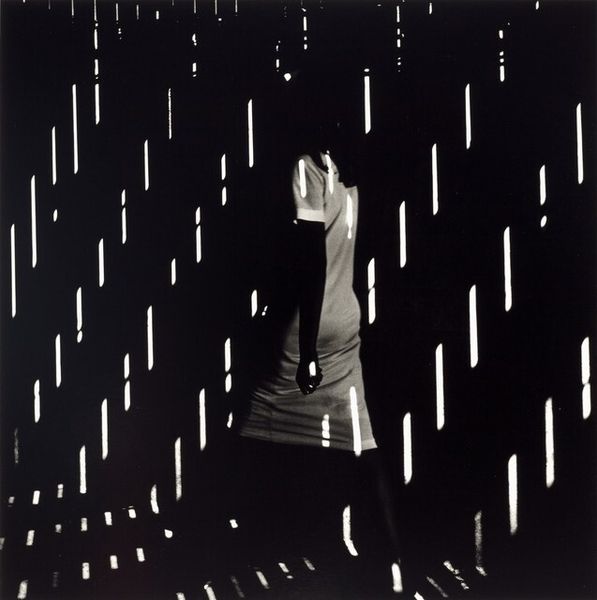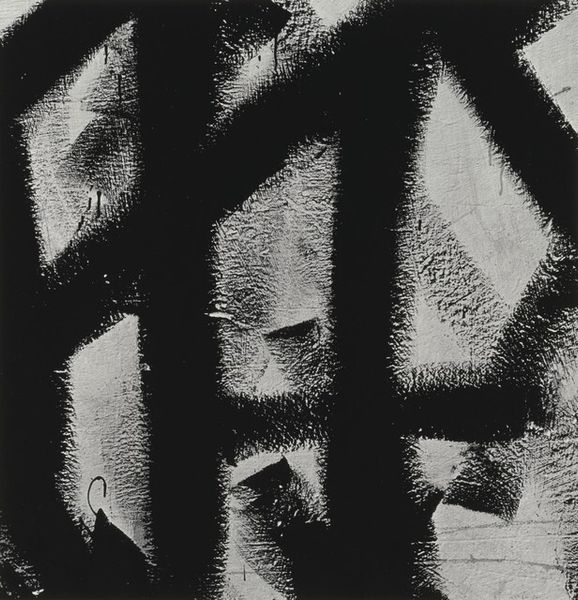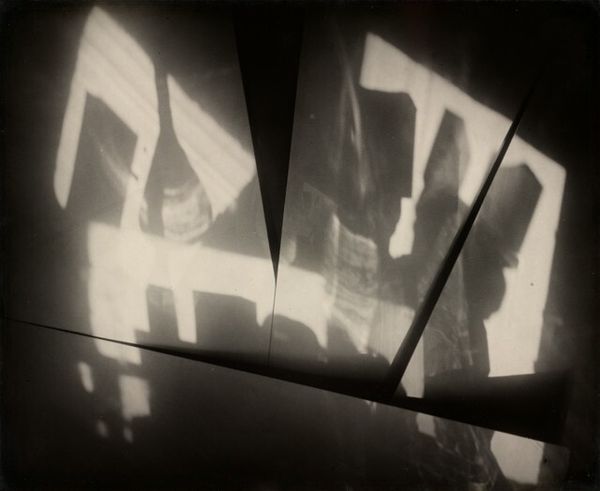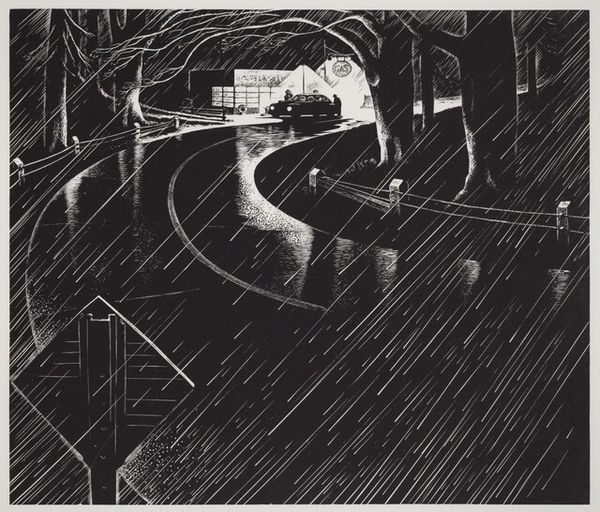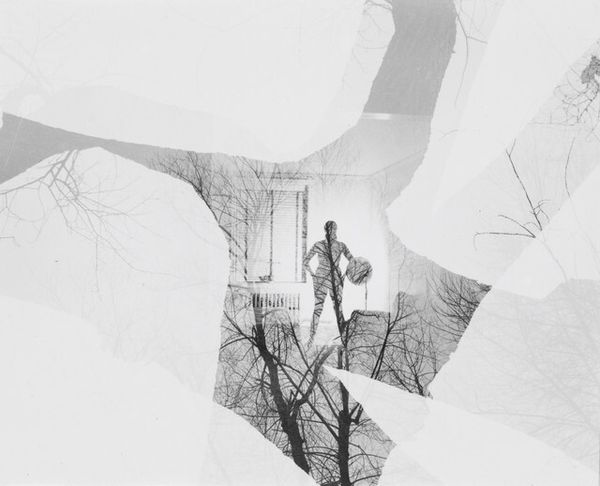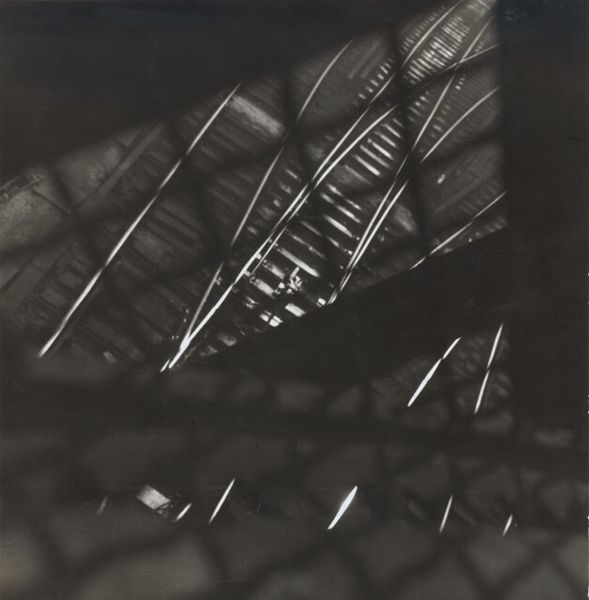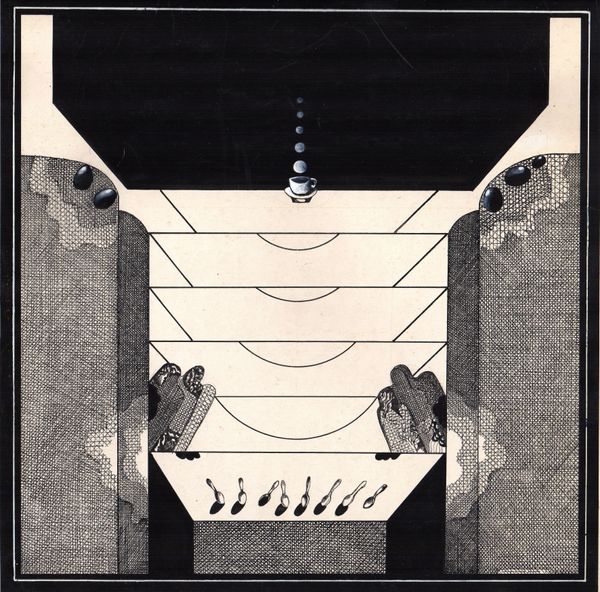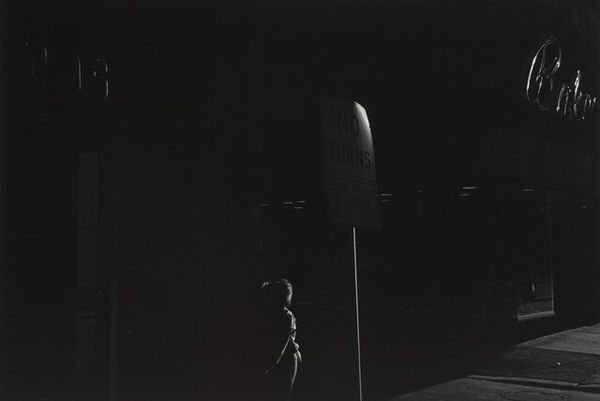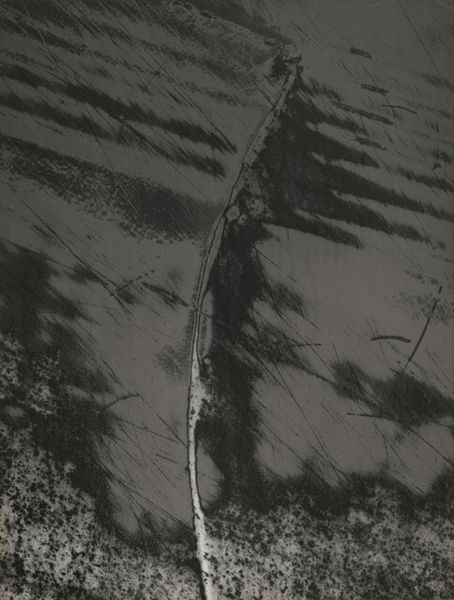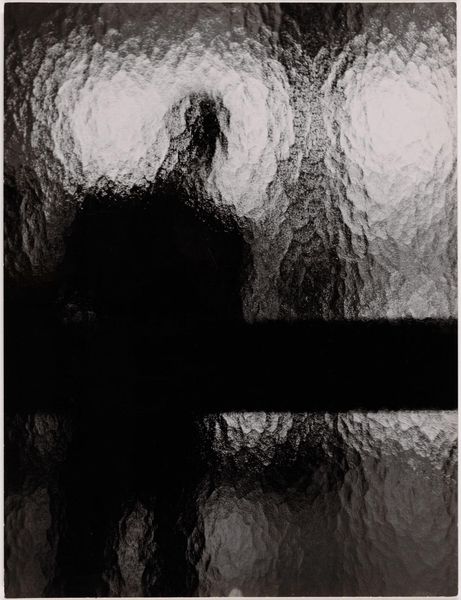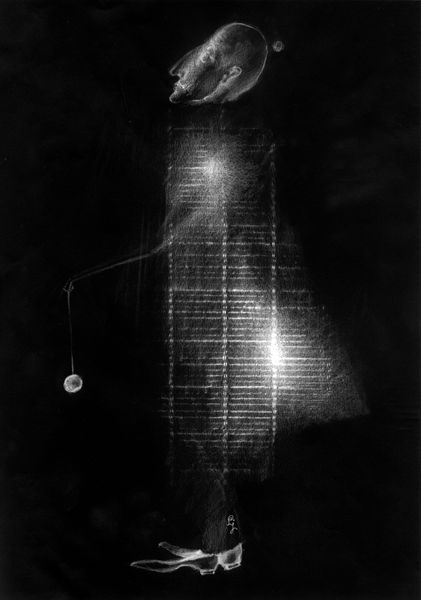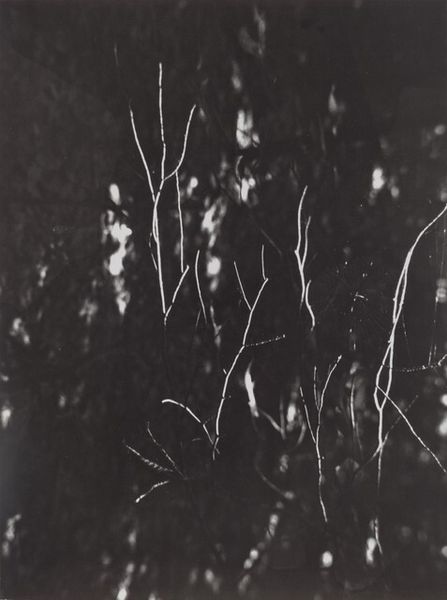
#
parametric
#
3d sculpting
#
3d model
#
3d printed part
#
sculpture
#
sculptural image
#
3d shape
#
3d modeling
#
black colour rhythm
#
rigid structure
Dimensions: image: 18.2 x 18 cm (7 3/16 x 7 1/16 in.) sheet: 25.4 x 20.2 cm (10 x 7 15/16 in.)
Copyright: National Gallery of Art: CC0 1.0
Curator: Looking at Ray Metzker’s black and white photograph, "Atlantic City," taken in 1966, the first thing I notice is the dramatic interplay of light and shadow. It's quite striking, wouldn’t you agree? Editor: Absolutely, it’s like being caught in a sudden downpour of light. The sharp contrast evokes a film noir atmosphere, and the anonymity of the figures contributes to an overall feeling of urban alienation. Curator: The long, almost staccato bars of light, give it a rather coded aesthetic. I find the contrast between those almost oppressive stripes and the faceless figure a signifier of being overwhelmed. It speaks to the disorienting, sometimes dehumanizing experience of modern life, right? Editor: Precisely, this reflects the mid-20th-century anxiety that percolated into various art forms, showcasing the effects of industrialization and consumerism on individual identity, specifically how architecture can create a sense of isolation, even in bustling environments like Atlantic City. Curator: I see those light stripes almost as visual barriers or prison bars that conceal as much as they reveal, contributing to that atmosphere of anonymity and fragmentation. It raises questions about observation, spectatorship, who is seeing whom, what power structures are implicit? Editor: That’s fascinating, considering that this image was captured in Atlantic City during a period of immense socio-economic transformation. The bright burst in the background lures viewers and the characters towards what is advertised but which may prove inaccessible, offering social commentary about aspirational capitalism in America at the time. Curator: I agree; it all connects with ideas about the human figure navigating these increasingly fragmented, architecturally rigid, almost hostile environments. These motifs run deeply through the art of this period, so to what extent might it be interpreted as commentary about modern society? Editor: I believe that Metzker delivers an incredibly potent visualization. One can consider it a time capsule of a bygone area or an unnervingly pertinent reminder of perennial urban isolation, especially since city centers still struggle with inequality despite outward appearances of luxury and development. Curator: Ultimately, the image leaves a lot open to interpretation, prompting reflections on the nature of modern experience, the effects of architectural space and power, or cultural shifts of the mid-20th century. Editor: Right, there's a lasting resonance. Metzker doesn't just present a scene, he poses questions about how we perceive and are perceived in our built environments.
Comments
No comments
Be the first to comment and join the conversation on the ultimate creative platform.
